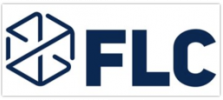Intralipid as a Contrast Agent to Enhance Subsurface Blood Flow Imaging
This technology includes a blood flow imaging method that allows for a higher density of smaller particles to be detected. Current imaging methods that are based on Doppler measurements are limited by the discontinuity in the capillary flow in the space between red blood cells. The core technology is to use a scattering agent to enhance capillary flow or microcirculation. This technology has been tested for optical coherence Doppler tomography, but can be expended to any Doppler based flow imaging techniques such as laser speckle imaging.


